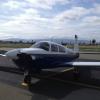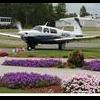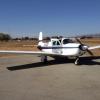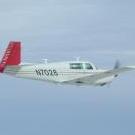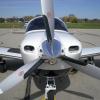Leaderboard
Popular Content
Showing content with the highest reputation on 03/19/2018 in all areas
-
Today I commemorated a year of ownership of flying to S21 Sunriver Oregon and back. It was good times. The weather wasn’t super good but well worth the flying. I even got a red light showing me I’ve been doing a lot of flying. It was a year ago today I flew out of Texas on my way home to Oregon. It’s been a great year with just over 130 hours of flight time. I just participated in my first owners assisted annual. I would of planned it for the end of March but I have a baby girl blessing our home this Friday. As they say “life is just about to get real”. I’ve done every one of my oil changes and I think there was four. I managed to cover my nose gear with oil the first two. But have gotten much better. I’ve changed out all the outside lights with LED’s, done avionics upgrades and a host of other things. I hope she is in better shape then when I got her. And I want to be able to say that with every passing year. Thank you everyone for helping me and listening to all my dumb questions:) Sent from my iPhone using Tapatalk7 points
-
The weather has been great for our water supply but not so for this VFR guy. Today looked promising but the clouds were moving in and our supply run was not critical and had to spend some time switching ours with our hangar partner none other than Paul Loewen and his 252 by the time we got that done I was set to give it up but really needed to get Snoopy back in the air. My wife bless her heart said why not just fly around the patch for a while and I'll take some pics. So out over the lake for some practice aviating get things up to temperature and back for a not to shabby landing. Hopefully the weather will improve soon.4 points
-
Here are pics of my new standby instruments installed. The old standby instruments were on the right and candidly kind of out of site out of mind. We built a new rocker switch mount and place the new SAM on the left. The arcnic is connected to one of the GIA’s which provides baro-sync to the PFD. The SAM is very bright, in fact too bright at night in its lowest setting. It is battery powered of course in case of power failure. The right side is now covered up. If you are thinking of one of these you can see that it does fit on the left. Russ Sent from my iPad using Tapatalk3 points
-
3 points
-
I always found the POH's from this time lacking, my 1965 edition is pretty messy to go into in flight to e.g. check performance figures and then they are all in mph, not straightforward really to use in the present day. What I found is that mostly the fuel flow data are quite accurate, obviously only if the power settings are done as in the POH. Where mostly the figures are optimistic is TAS. Depending whether you are after maximum cruise performance or max range, our C models have very different cruise settings. As I said, it is not really straightforward to extract them to make sense, but I found the following: For high speed cruise, 2600 RPM yield best speed but also a massive fuel flow. Mooney claims the C model can fly 160 kts from SL to 7500 ft flat out, with 14.4 gph at 2500 ft, 12.9 gph at 5000 ft and 11.8 gph at 7500 ft. Well, I have not really tried it but the best I ever saw was 150 kt at roughly 10.5 GPH, which is again not far off. If Range is the issue, 2300 RPM are more useful. I found the best range I could get out of the manual to be 769 NM still air (plus 45 min reserve) at 10'000 ft, 7.8 GPH which yields 144 kts TAS. The power setting for that would be 17" and 2300 RPM. This would also mean around 5-18 hrs flight time (plus reserve). I still think the C Mooneys are very economical, if I compare them to the other Mooneys it comes 2nd only after the J and leaves everything else wey behind in terms of NM per USG used. High speed cruise however is not necessarily where it shines, but below 8 gph and still 145 KTAS is a very neat figure for a 180 hp airplane.3 points
-
Congrats on the first year of ownership. Bigger congratulations on the baby girl! Unfortunately the baby girl will cost more to own than the Mooney, but there is nothing better than watching them grow! Cheers, Dan3 points
-
My bird has 5500 hours in 40 years. That comes to about 135 hours per year. She was used for business travel for a long time, hangared, and somebody loved her before I found her. Last year we re packed the jack screw. This year we strip and reinforce the upper cowl with carbon fiber, repair And replace cowl fasteners, and paint the upper cowl. Oh and upgrade to IFD 440 and remote mounted AXP322 transponder completed. I have no issues with corrosion and no issues with 5500 hours.3 points
-
No idea on the amount of enrichment but I am sure it varies from one dash number carb to another by the size of the precise hole. It's either open or closed. Nothing in between. Like I mentioned, unless one is down low and running wide open this system has no meaning to the total operation. Once the mixture control is pulled this system is out of its control range and has no effect. You can leave the throttle wide open and lean it at altitude with this system having no effect on the fuel flow (leaned) what so ever.3 points
-
Above is the YouTube Video of my flight to KRDG. I was the first to arrive. I took some video of Mooneys arriving and a shorter video of my flight home. You can hear the radio chatter of several of us leaving on the second flight. For the first flight I tried to talk my way through what I was doing and demo some of the features of the avionics package.3 points
-
We really don't have 2 fuel jets in our carburetors - Let's begin with basics. On any carb'd engine the main fuel flow comes from the float bowl, through the main metering jet (this is the main way of limiting maximum fuel flow to the engine) and out the main fuel nozzle located in the throat of the carb. Fuel flows through the nozzle to the engine anytime intake air is flowing through the throat of the carb. It is being "pushed" through the nozzle by the difference between the air pressure (pushing) on/in the top of the float chamber ( higher pressure) and the lower air pressure in the throat of the carb due to the flow of air speeding up (Bernoulli's Principle) through the carb throat. The faster the air (more throttle) the more fuel is "pushed" by the higher pressure air in the float chamber through the fuel nozzle. WOT = max fuel flow, governed by the main metering jet. On air cooled engines like we have, the air cooling is not enough to keep the engine within heat parameters without the use of "extra" fuel for cooling at WOT and low altitude. Governed again by the main metering jet size called for by the engine maker. When looking at the "mechanical" fuel enrichment system (economizer system) in the 180 HP Lycoming MA4-5 carb, the system really doesn't have 2 fuel jets. What happens is that as the power comes up (with WOT) the throttle arm is pushing on a spring loaded pin valve, holding it closed. Once we pull back off of WOT a little this spring loaded pin valve opens. This valve ports air from the top of the float chamber (higher ambient air pressure) through a precisely sized hole and into the main fuel nozzle after the main metering jet for the carb (a lower pressure area as we said before). More air after the main jet means less fuel so the mixture "leans" a little, as we don't need the extra fuel for cooling like we did at WOT. All done "automatically by Lycoming design. Thus, as Lycoming calls it, the "economizer" system. Once we get high enough and want/need to lean the mixture for altitude the leaning of the economizer system has no effect as we take the FF below the amount the economizer system can do by using the use of the mixture control. Remember, the economizer has a very limited effect because of the highly precise hole that it uses for leaning. Some who have cylinder head temp problems may want to check another item to try and cure the issue. Every airplane is certified with a very precisely calibrated carb. Each carb for each airframe installation has a very specific fuel flow design even though they are all MA4-5 carbs. These carbs are specified in the TCDS for each airplane. Sometimes 2 or more are allowed, each with maybe a different fuel flow specific (higher or lower). If you can't seem to get a handle on your temps you might check very carefully to see if you have the correct SPECIFIC carb for your airplane.3 points
-
Here's some pictures of my rig- The straps I had made- Alpha Jacks and the awesome new Harbor Freight ram () in my 30 year old hoist- The jack stands and steel bar in the nose gear is just added safety for when I'm not swinging the gear. Don't forget to remove when I do swing the gear!! The locking rings- My modification to the pipe stand. I made it so I can also put the original V back on and use it as a pipe stand if I need to. Rock solid! About $80 on Amazon. I have since modified this rig so I can now lift just the nose with a bottle jack and take just the front wheel off if I need to.3 points
-
Many people, when doing panel make-overs, are taking the MidContinent Lifesaver Gyros with a battery backups out of their panels because they are mesmerized with having all glass, even the backup. These were close to $5000 new and have a Mean Time Between Failure rating of 7500 hours. I bought one used from Beechtalk that had been recently overhauled at MidContinent for $750 and replaced my turn coordinator with it. Look for one of these on the used market. They are very well made and could do as their name implies, save your life. They also serve as approved backups for Aspen and Garmin glass panels down the road.3 points
-
Lest anyone jump in to get some of the ones cited above, be sure not to get those which use a "set screw" which can mar the surface of the jack shaft. Although those which use two screws to pinch the shaft will work, I think those which use a single pinch screw are the easiest to use for this purpose.2 points
-
We had some trace mixed icing a week ago leaving Kitchener. No precipitation on the ground, but cloud bases 1000 tops 6000. Icing began climbing through 4000 at about -10C which was unexpected. We got on top quickly, but the ice remained until landing for customs in Ohio. One thing I noted (based on the water dripping off), was the tail had apparently more accumulation than the wings. Something to watch more closely in the future.2 points
-
I would think you would want an A&P for the vac pump and an avionics shop for the radio issue. Most (not all of course) mechanics are not electronics experts. Ideally this would be somebody local to you. Who has been maintaining your aircraft so far? Or are you new to the area? I don't know anybody in Oakland, although I do know a couple at my field KRHV. I suggested the alternator issue because your symptom varies with rpm and also because it is very easy for you to test yourself. I also suggested it because power problems often cause very random and hard to track fails that don't necessarily make sense. I once had a marine radio that transmitted on the wrong frequency. The replacement radio did the same thing. Ultimately I found the radio power was wired with wire too small causing a voltage drop under transmit which caused this strange fail. If it were me I would do a bit more debugging on the radio issue myself before I turned it over to a shop for repair. Lets talk about the self-TX symptom. Does this happen on both radios simultaneously, or only on the radio selected by the audio panel? If it is just the selected radio it would be likely to be Marauder's issue. Only the pilot positions have PTT, so the rear passenger jacks could not cause this. And the pilot jacks are easy to see, no disassembly required. If both radios self-TX at the same time that would suggest the audio panel, which is the only common device which could cause this. While observing the failure you could slide out the audio panel from the rack and observe if the problem stops. Most avionics use a 3/16 hex in a little hole in the front panel to release them from the rack. Finally, in both my previous J and current Encore there is a 2nd set of headset jacks wired directly to the #1 radio. For me these are located next to the pilot right knee. These are for emergency purpose when the audio panel fails. Assuming your install is similar, you could slide out the audio panel and connect your headset to the backup jacks and observe any changes. Larry2 points
-
I got into the weeds on these part numbers a while back when trying to sort my temp issues, though Cliffy clearly knows carbs infinitely better than me. 4164 -1 is the higher flow model, with 3878-M being a 3878 that has been modified to match 4164-1’s fuel flow.2 points
-
2 points
-
My M20C has about 7500 hours. Over 4000 of that was flying pipeline patrol in Illinois. Low power, low speed, low stress, low corrosion. It's in very good shape. Just like with pilots, hours aren't always the same. Quality, not quantity, are what matter.2 points
-
I second on a good buying experience with All American. Bought my first J from Jimmy and couldn't be more happier.2 points
-
Is this just to demonstrate your xenophobia? You do realize Mooney has been owned by the Meijing Group since 2013? This has undoubtedly been a lifesaver, job saver, and wonderful turn of events for the good folks in Kerrville, TX. Mooney certainly has challenges, but Chinese money is not one of them. Without it, there would be no Mooney today.2 points
-
They predicted it in the sixties: http://www.imdb.com/title/tt0064177/ And copied many times sense...1 point
-
Did we ever settle if the throttle quadrant cables need to replaced on time rather than condition? Seems like they knob one fail on the crimp point from the rod to flexible part. I would think the quadrant is all flexible and would go with condition unless molested in some way. TPM is the quadrant way.1 point
-
I have the original cooler at the front of the cowl by the intake. I don’t have the doghouse arranagment. Fully stock 76 other than the a3b6 (since they haven’t made a1a engines in generations) -Robert1 point
-
The J A3B6 oil cooler hose par numbers were generated by me and they have them. If the oil cooler isn’t in the exact same place as a J then you’ll need to measure your length requirements. Take the measurement from the center of the flare on each fitting that the hose connects to.1 point
-
I was searching for threads on the long side window mod and came across this old thread. Thought I would share that I found a great way to MASSIVELY increase overhead vent air flow on older models with the scoop on top of the cabin. remove the headliner and then remove the flat aluminum sheet in front of the water drain tube to access the vent chamber. yank out all the old foam that the factory put in there as a cabin air filter.... put it all back together and you will be blasted will nice fresh air the rest of your days!!1 point
-
I debated that quite a bit, but settled on "fixing" it from the original TMP to the standard TPM. I'm thinking you said it backward in both places though. Otherwise, I'm very confused.1 point
-
Those two spliced lateral deviation wires did not survive the install. Having it track in Hdg mode means the radio coupler, amplifier and servos are all functioning in some capacity. That’s why you have resistance. Fortunately it’s only two wires. You could even test it by taking test leads and using the HSI pins to connect to the radio coupler. Then use the 430 as a CDI/HSI and see if it tracks on the ground. Your installer should probably tackle this one as part of warranty work.1 point
-
More than several Bob, way more than several on MS, if you've been paying attention.1 point
-
Idk it’s a 50$ belt and by the time it goes bad, the other one is bad too from being zip tied to a hot engine for 800 hours, and 5 years of ozone.1 point
-
I pulled an electric AI for a panel upgrade. I gave it to a fellow pilot who had only one vacuum AI in his Cessna. Spinning gyro or solid state, there are now lots of low-cost ways to get that second attitude reference. “Friends don’t let friends fly IMC with just one AI.” (Me, well, I have 4 attitude references. But I have become a cautious old guy.)1 point
-
1 point
-
Congrats! It’s all good! Three girls here, they are special! 7,5,&1. AND we still have the Mooney! Enjoy the ride! -Matt1 point
-
This sounds like it would fit the issue. It would also explain why the problem occurred before, resolved, and then came back (the insulators could be loose, and being periodically displaced or something).1 point
-
Oscar Here it is copied from the Mooney C TCDS- IV. Model M20C, 4 PCLM (Normal Category); Approved October 20, 1961 Engine Textron-Lycoming O-360-A1D or O-360-A1A (Carburetor MA4-5, Flow Setting P/N 10-3878, 10-3878-M, or 10-4164-1).1 point
-
Mine is a 1965 and had just over 5,200 hours on it when I bought it in Dec 2016. It also came with all the records on the plane, with the exception of the original prop log but the prop had been replaced 7 years prior and the log for that one was complete. The case of paperwork that I received even included a letter from the original owner written to his friend that he sold the plane to explaining why he was asking for a certain price, that he didn't know of any issues with the plane, but "you can't ever know everything that might come up." (What you might expect one friend to say to another if he were selling his favorite car). I am the fourth owner and have been very happy with the plane. I spent some time getting to know the owner that I purchased it from, I personally think that vetting the person selling the plane ranks up there in importance with the PPI. You can learn quite a bit about the plane by learning about the owner.1 point
-
1 point
-
My point was that a lot of the Midcontinent ones are being taken out by those wanting the latest glass units and some people are replacing them with ones which aren't TSO'd and aren't even approved for backup. In my case, I paid $750 for my Midcontinent, the install was slightly more than zero, but not much. It replaced a noisy, failing turn coordinator. The link I sent about battery replacement was $45 for three years, not $300. There is no software to have any glitches with and at a 7500 hours between failure rating they are time tested, fully TSO'd, not new technology. As far as battery life, I also have two airplane batteries and two alternators to provide power. All of Garmin's literature says it is not approved for backup. Everyone wants it to be their backup so badly that they are ignoring that. Is having one safer than not having any backup? Absolutely. But Trek Lawler, Garmin's guy on Beechtalk, says that it was not tested to the standards that an instrument must be tested to be considered a backup. If there was any way that Garmin could market it as a backup, they would.1 point
-
I’ve watched it many times over the years. One thing remains the same in my book, in level flight, the horizon must always stay below a given point in the windshield. If it goes above this point, it’s time to get back on the clock and work the plan you should have in place. I learned this flying my Cardinal back country fly in Idaho, where I had very little spare power. Here is a video that might thrill. Just know your limits.1 point
-
Point taken. I guess I don't understand if the "bet" is just for fun, or if he's contemplating ordering parts in advance, or otherwise spending time/money without knowing what's wrong. That's the sort of judgment call mechanics are often pilloried for here, but I suppose it's less of a sin if it's the owner themselves speculating.1 point
-
Don't bet. Diagnose. It's statistically likely to be leaking servo seals and statistically unlikely to be the poly tubing being "brittle", but that doesn't mean much on any particular airplane. You also didn't mention a couple other possibilities, both of which we found on our airplane when resurrecting the Brittain system: bad seals at the interface between the poly tubing and the servos, and specific damage to the poly lines caused by interior panel screws being inadvertently screwed into the poly lines. There's really no way to know without proper debug and diagnosis.1 point
-
How and where an aircraft was when it was not flying is probably more important than flight hours. An ad that says, "always hangared in AZ" would catch my interest before one that said, "low hours".1 point
-
This Paul @gxrpilot has it exactly right. [emoji3] Sorry guys it has nothing to do with plugs but entirely due to minimizing exposure to red box when at power levels at 65% or higher. The big pull simply avoids going though peak for all the cylinders. This way all but one remain on the be LOP side while only the richest peaks.Hope that clarifies it. Sent from my iPhone using Tapatalk1 point
-
bought, destroy. Sorry, poor choice of words. I was pounding the keyboard pretty hard when I typed that. I didn't intend to imply Garmin did anything wrong, you are right but the same result. The consumer was hurt by lack of competition.1 point
-
Where it makes sense to go deeper LOP and take the speed penalty is when it will eliminate a fuel stop. Now that I fly a 252, it's difficult to back off the 75% power and 100 ROP. I like seeing TAS is the high 180's to low 200's depending on the altitude. But there have been a few long trips where going from 14 gph at 100 ROP to 9 gph at 30 LOP, eliminated a fuel stop. So even at a 15 to 20 knot penalty, I still get there quite a bit sooner. But all things being equal, I'd rather buy the gas and go fast!1 point
-
We flew back to the U.P. today from Spruce Creek, Florida. Argh......40-70 knot heads winds the whole way. We made it down a couple weeks ago, with a pretty good detour to Milan TN to check on the Lancair paint and interior project, in just over 5 hours. Well, those winds apparently hadn't let up since then. It was 7.5 hours hours home. Guess I would have been 12 in the old F model (or under 5 in the Lancair)... so be it. It's more hours added to the logbook, it was good weather and I love flying. First photo is my failed attempt to have one of my son's friends try to convince his parents (his dad and I coached competitive soccer together for 10 years) the boys were standing in front of Tom and Beth's new Florida home. My son is on the right, with his 3 buddies that came down for a week of winter relief from the beautiful Green Bay March weather. BTW, my soccer coaching partner didn't buy the stunt for a second. I took a picture of the shore line of Daytona Beach on our way out as the sun was rising. The picture doesn't do justice as the clouds scattered across the bottom half of the sun in the picture were amazing. I shot of few of the Blue Ridge Mountains as we were approaching Knoxville. Some snow on the peaks (and some clouds down in the hills) looking out Beth's window. First time in a long time we were looking at this terrain from a breathable altitude. Very nice. Final picture was in front of my hangar this afternoon. Yep.....the snow is still here. Tom1 point
-
My 13 yo loves the bumps. If they are good enough that his back side is coming out of the seat and I have to tighten his seat belt they put an extra big smile on his face.1 point
-
Started to collect more pieces of the panel. Found some smoking great deals and for less then the cost of a 430 I got both a PMA8000B and A GNS530W. Plus an I-pad 3, Sensorcon inspector, along with LED dimmable red pods. @gsxrpilot thanks for the advice I'll continue to collect and get it all ready for the install.1 point
-
OMG! I really didn't need to have read that. Man, if could have had this done for $150, I would have been all over it. Good for you!!1 point
-
1 point



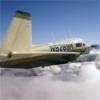
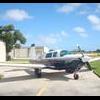

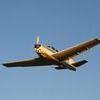


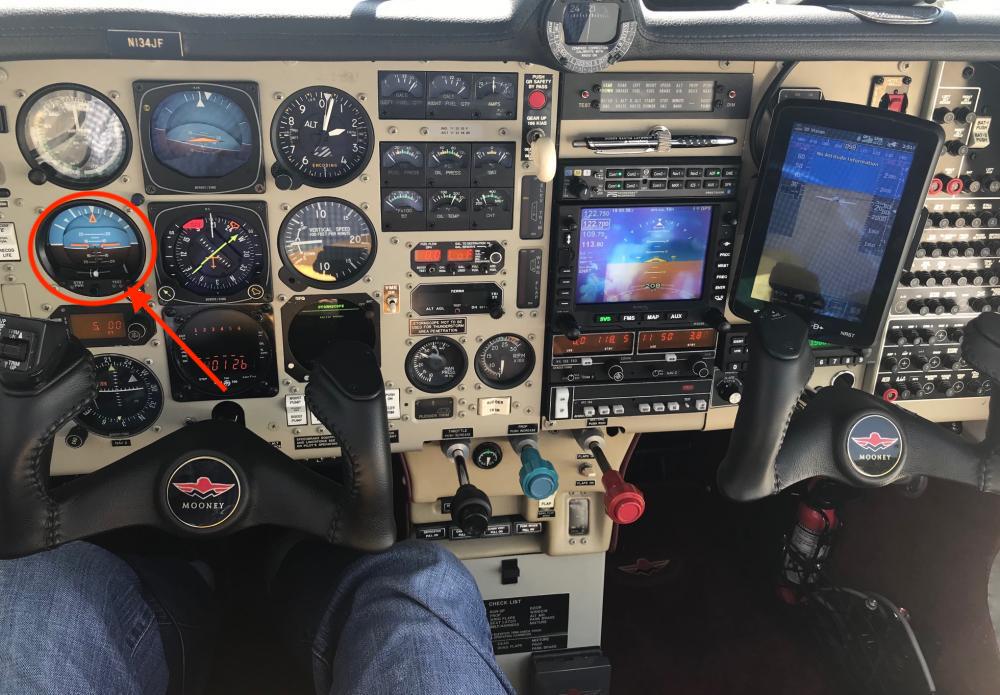
.thumb.png.7c67574d7b28f67b0b4a17760919b1ac.png)



